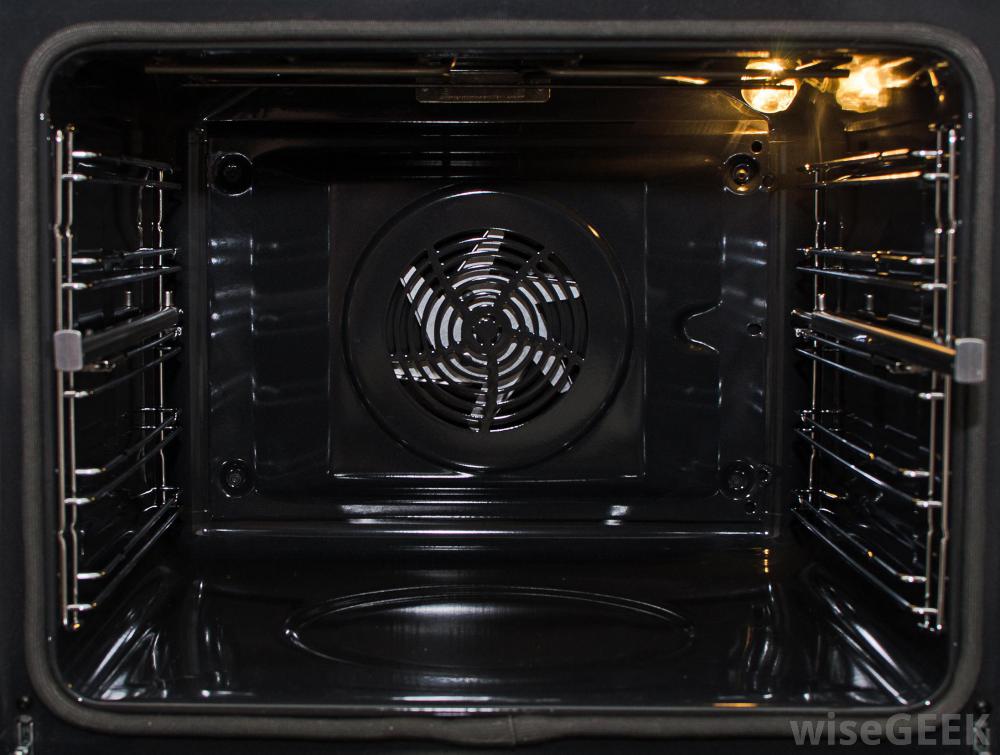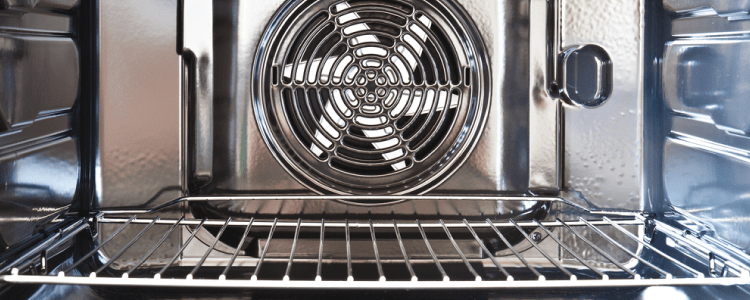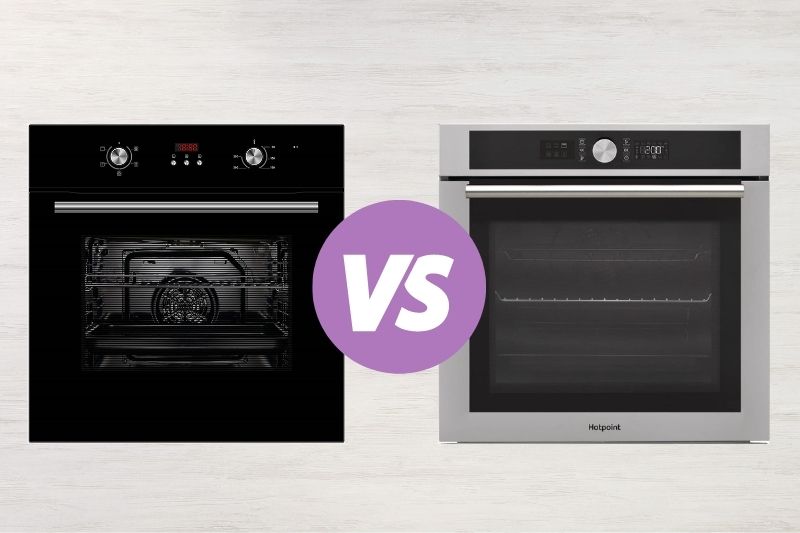Are All Gas Ovens Equipped With Fans? Do They Require Venting?

The majority of cooks favor gas ovens, but we’ve also heard a lot about convection ovens, which employ a fan to circulate heated air, reducing cooking time and improving consistency. Do gas ovens, on the other hand, have fans?
I decided to look into it, and here’s what I discovered:
Fans aren’t standard on all gas ovens, and ranges can be fan-assisted or without a fan in both gas and electric models. A true convection oven, on the other hand, would almost always be electric. The convection gas ranges, on the other hand, utilize an electric heating element behind the fan.
But that’s just a basic rundown of how and when fans, whether gas or electric, are used inside ovens.
There’s a lot to learn about fan-assisted gas ovens and how they compare to convection ovens. So let’s get started straight away.
Are all ovens equipped with fans?
No, there are no fans in all ovens. The most well-known form of the oven with a fan is the convection oven, which has the fan in front of a third heating element at the back of the oven. However, there are also fan-assisted ovens, in which the warm air is blown around the inside of the oven by the fan.
A convection oven is a fan-assisted oven
A convection oven, as compared to other ovens, has a fan right behind the heating element. The top and bottom of most ovens include heating elements. An additional heating element on the back of the oven with a fan in front of it is an authentic convection oven.
This means that the fanned air is heated, rather than just blowing the warm air around inside the oven as a fan would. Fans are not located directly behind the heating element in fan-assisted ovens. The only thing inside is a fan that moves the air around.
Fan-assisted ovens are available in both gas and electric versions. Due to the nature of gas, an authentic convection oven that is also gas-powered is uncommon.
When a gas range is designated as a convection oven, an electric heating element is hidden behind the fan. However, if I were to buy one, I would opt for one with a gas fan-assisted oven, and I’d also seek one that allows me to turn the fan on or off.
Most chefs prefer gas ovens because they allow them better control of the temperature and outcome of the dish.
Many chefs question whether convection ovens genuinely cook food faster or only cook the exterior of the dish faster. On the other hand, chefs such as Gordon Ramsay and Jamie Oliver employ both gas and convection ovens.
However, most of us will not have enough space in our kitchen for two ovens.
When preparing for a large group around the holidays, Jamie Oliver recommends using a convection oven. That’s why having one that can turn the fan on or off comes in handy.
What you cook determines which oven is best for you and your household. Many (but not all) ovens with a fan allow you to choose when to use them.
In other words, you can usually cook and only use the fan when necessary.
In a gas oven, when should you use a fan?

Thanksgiving, Christmas, or large family gatherings are the most acceptable times to use a fan in a gas oven for that perfect turkey or ham. For products that require to rise, such as a soufflé or cakes, convection, and fan-assisted gas ovens are not suggested.
By employing gas and a fan to cook your food evenly, you get the best of both worlds. To roast and bake specific foods, such as cookies and pies, you’ll want to utilize your gas convection oven. As previously stated, most moist baking should not be done in a gas fan-assisted or convection oven, and cakes and custards come to mind.
Making bread with a fan is likewise not a good idea.
The reason for this is that the fan will unevenly distribute the batter, resulting in skewed outcomes. Anything covered, such as hams, should, however, always be used with the fan.
Many Whirlpool and Frigidaire convection models provide the option of turning off the fan.
Other ranges, like the Samsung Flex Duo, are purely convection. There will be no way to turn off the fan on any oven that reads convection only or fan-assisted only. As a result, you lose flexibility, which is not ideal for the majority of us.
What’s the difference between a fan-assisted oven and a regular oven?

The critical distinction is the location of the fan and how it aids in the healing process. The fan is located behind a third heating element on the rear wall of a standard convection oven. A fan-assisted oven has a fan at the back but no additional heating element.
The heat from a convection oven is similar to that of a blanket. The air is heated just before it reaches the fan, so the warm air escapes and helps the top and bottom heating elements. The air is circulated around the oven with a fan-assisted oven for more thorough heating. It isn’t, however, pushing air that has just been heated. It’s just circulating the already warm air.
Fans are not present in traditional ovens—the simple act of heating up a place with no action.
This isn’t to say that one sort of oven is superior to the other. You must examine what will work best with the food you’re preparing. A convection oven is a good option if you want to save electricity. Due to their greater efficiency, convection ovens can reduce cooking times.
However, they are frequently more expensive to buy.
If you want to bake, a classic gas oven might be the way to go. Convection and even fan-assisted ovens don’t work well with many baked items. If you do buy one, make sure it has a switch to turn off the fan. However, when designing your perfect kitchen, an oven is just one of many essentials.
In a fan oven, how much do you lower the temperature?
Lower the temperature by 50 degrees Fahrenheit if using a convection oven or fan-assisted oven. However, always read the recipe and the oven manual before making any changes, as various meals may require different adjustments.
“Why would I need to modify the oven’s temperature?” you might wonder.
A convection oven, often known as a fan-assisted oven, circulates heat and cooks food more evenly. This does, however, mean that food cooks faster in these ovens. To compensate for the oven cooking the food faster, reduce the oven temperature; otherwise, your meal will burn. This reduces the time it takes for your food to cook and the oven to heat up, which means you won’t have to spend as much time prepping before you can begin cooking.
As a result, your cooking times will differ.
It takes roughly 10 minutes on average, although it varies depending on the meal you’re preparing and the sort of oven you have.
Now, oven fans aren’t the only method that technology may help with food heating.
Is it possible to add a fan to a gas oven?

No. There is no simple way to install a fan to an existing oven, whether gas or electric, that was not built with one. Even if you don’t want it to be convection, installing a fan would include cutting the back of the oven, mounting the fan, and wiring it for power.
Most of us lack the technical ability to do so safely and accurately. After all, if the hole you drilled wasn’t quite the appropriate size, heat could escape. You’d also need to make sure you had an oven-safe fan to stop it from melting or catching fire.
Even if you can’t add more fans to a convection oven or a fan to a gas oven, there are still things you can do to improve the way your food cooks:
Preheat the oven to 350°F.
Rotate your dish periodically to avoid any issues with cold areas in the oven.
To be clear, a fan can be installed in a gas (or electric) oven, but it must originate from the manufacturer. It’s not a good idea to add any extra fans to a regular gas oven.
Have I answered all of your questions concerning gas ovens?
We talked a lot about gas ovens and oven fans in this article. You learned how to tell the difference between ovens and why cooking using a fan oven at a lower temperature is critical.
Although not all gas ovens have fans, those that do cook food more quickly and evenly mostly do. Remember that fan-assisted and convection ovens are available for both gas and electric ovens. However, an electric heating element is used behind the fan in a gas convection oven.
And I only advocate getting one with a switch to turn the fan on or off. Keep yourself safe and have fun cooking.











